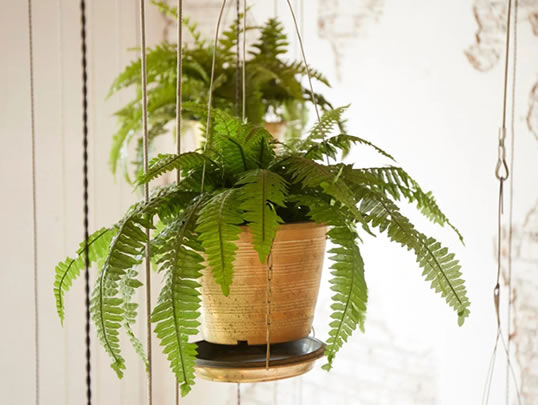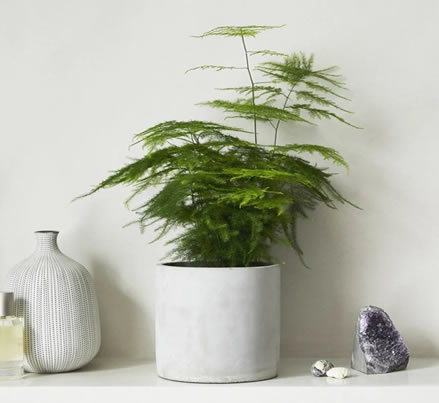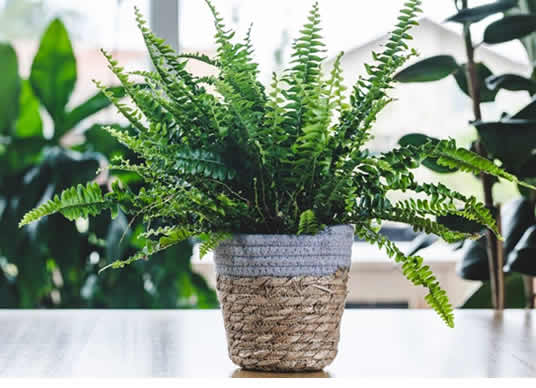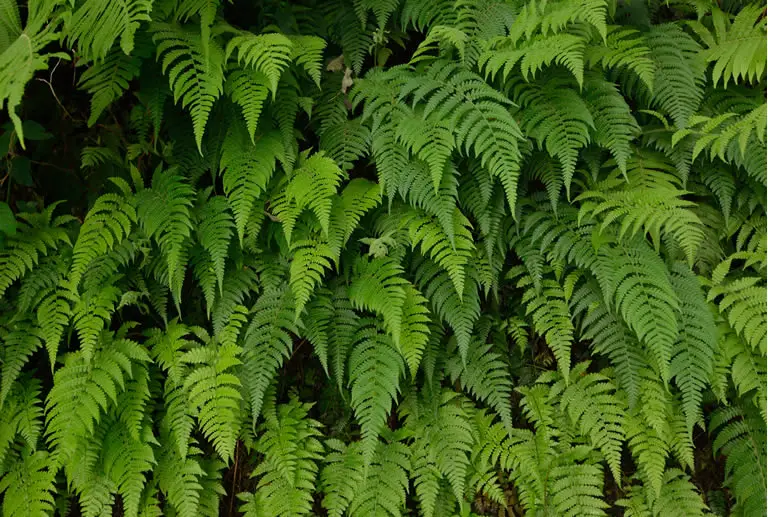Many plant enthusiasts will occasionally spill their cold coffee over their plants or add used coffee grounds to plant soil. Gardeners and houseplant growers often swear by the effects of coffee grounds on their plants but not all plants respond well to this form of fertilization.
Table of Contents
- Do Not Use Coffee Grounds On Ferns
- Why coffee grounds are NOT good for ferns!
- Why you shouldn’t use coffee grounds as a plant fertilizer – no matter what you’ve read online!
- The effects of coffee grounds on ferns can be disastrous
- 4 Ways coffee is promoted online as a fern fertilizer but the true damage it causes
- 1. Coffee adds nitrogen to the soil but the increased levels often lead to leaf scorching and tip burn
- 2. Coffee lowers the pH value of the soil but it lowers it to a level that is detrimental to ferns
- 3. Coffee may help with pest control but it also leads to fungal infections in the soil
- 4. Coffee grounds act as a mulch for better water retention but it actually causes too much moisture retention for ferns
- If you can’t use coffee then what is the best fertilizer for ferns?
Do Not Use Coffee Grounds On Ferns
So, as a fern owner who will want to know, are coffee grounds good for ferns?
Coffee grounds are not good for ferns.
Using liquid coffee, used or fresh coffee grounds, or any other coffee based product, as fertilizer for your ferns will inhibit the growth of the plants.
Coffee adds too much nitrogen to the soil for a fern.
It also promotes fungal growth and contains antimicrobial agents that kill beneficial microbes in the soil.
Why coffee grounds are NOT good for ferns!
I am actually alarmed by the amount of website owners who tout the benefits of feeding you fern houseplant, and yard plants, coffee!

As I highlight in this article, coffee is not good for ferns.
The immediate benefits you will see from using coffee on ferns will be offset by the many problems it causes in the long run.
If you feed your fern coffee once, you will probably see a boost in its growth but after awhile the plant will start to display some serious side-effects.
Don’t opt for short-term results when the long-tern effects are disastrous for your plant, no matter what you read online
Why you shouldn’t use coffee grounds as a plant fertilizer – no matter what you’ve read online!
I am very vocal about the negative effects that coffee grounds have on plants when they are used as a fertilizer.
There are numerous reasons why you should not use coffee grounds on any plant. Ferns though, are especially susceptible to the negative effects that this caffeine-based product produces, on both indoor and outdoor plants.
The first thing to consider if you want to add coffee grounds to your plants is its effect on the acidity levels of the soil.
Although there are some outdoor and indoor plants that love acidic soil, and that can therefore benefit from the acidic nature of coffee grounds, coffee grounds are not good as a long-term fertilizer on any plant.
There are other harmful side-effects of using coffee grounds that negate any of its benefits as I will highlight later in this article.
Although I don’t recommend using coffee grounds in any plant there are some plants, like ferns, which will react badly to coffee grounds from the outset.
I feel so strongly about not using coffee grounds as a fertilizer that I have covered the topic several times on this website.
In my previous articles are coffee grounds good for bird of paradise, are coffee grounds good for rubber plants and are coffee grounds good for elephant ears I highlight the many problems that excessive use of coffee grounds can have on your indoor and outdoor plants.
How much coffee grounds is considered to be excessive?
That’s a good question but unfortunately it has a bad answer.
The unfortunate answer is … it depends!
That’s a pretty open-ended answer and not very helpful when you want to know how much coffee grounds are safe to add to your plant.
That is why I tell all gardeners to avoid using coffee byproducts on their plants.
You can never really gauge how much coffee grounds are enough in order to add beneficial nitrogen to the soil.
Nor can you tell how much coffee is too much.
It is too easy to add amounts that start to kill the microorganisms that produce the nutrients your plant needs to grow.

It is just best to avoid using coffee at all in my opinion as that way you will not run the risk of damaging your much loved plants.
However, many people will still continue to do it because it can have an immediately beneficial impact on a plant that is nitrogen deficient.
When it comes to ferns though … never even contemplate using any type of coffee product for fertilization.
Let’s take a look at how coffee grounds mess with the growth of a fern.
The effects of coffee grounds on ferns can be disastrous
Ferns thrive in indirect sunlight and grow best in moist soil and a humid atmosphere.
Ferns will grow best in a rich moist potting soil.
Although the soil should be kept moist it must have good drainage.
It is true that coffee grounds can be used as a mulch to retain moisture in the soil but coffee is acidic.
Coffee grounds will therefore acidify the soil. Ferns don’t like acidic soil.
That is problem number 1 with using coffee grounds on fern plants.
Although ferns are light feeders they grow best in a potting mixture that is high in organic nutrient content.
Here we encounter another problem with using coffee grounds as a fertilizer.
Coffee contains antimicrobial agents that are deadly to the microorganisms in the soil and they are needed to convert organic matter into the nutrients that the fern plant feeds on.
As you will see in the rest of this article these problems are not the only detrimental effects that coffee has on fern plants but they will be the most immediately evident.
Now you may be wondering why so many online gardeners and gardening forums talk about the amazing benefits of using coffee grounds on both their indoor and outdoor plants.
So, I will discuss the reasons why most novices use coffee grounds as a form of fertilization while highlighting the reasons why most professionals will never use them.
I will also show you what the devastating effects of using coffee grounds can have on ferns in particular.
4 Ways coffee is promoted online as a fern fertilizer but the true damage it causes
There are some plausible reasons for using coffee grounds on certain plants, at least in theory.
Below I will cover the basic reasons why many gardeners swear by the use of coffee grounds while highlighting why these reasons do not apply to fern plants.
In fact I will show you why using coffee grounds on a fern plant will more often than not have the opposite effect of the one the gardener is aiming for.
1. Coffee adds nitrogen to the soil but the increased levels often lead to leaf scorching and tip burn
Many gardeners and indoor houseplant owners will swear by the effects of adding coffee grounds to their plants’ soil.
Why is this?
Well, there can be an almost immediate positive effect on the growth of many plants when coffee grounds are added to the soil.
This is due to the immediate introduction of nitrogen which is produced when microorganisms in the soil feed on the coffee grounds.
This is especially the case with potted plant soil that has no other source of nitrogen.
In truth, plants that react really well to the addition of coffee grounds are generally nitrogen deficient to begin with.
An additional worry centers around getting the amount of coffee grounds correct as this can be a difficult task to accomplish.
Plants that initially react positively to coffee grounds can go downhill quickly when their owners keep adding more coffee grounds to the soil in the belief that it is helping the plant.
Getting the amount of coffee grounds just right can be a matter of trial-and-error. I don’t know about you but for me, that is not a risk I am not willing to take with plants that I have cultivated and cared for over months or years.
When it comes to ferns, adding too much coffee grounds can be disastrous.
Even adding a small amount over the recommended nitrogen levels for fern soil can lead to tip burn and also result in dry leaves and a very unhealthy plant.
Tropical ferns are especially prone to developing problems from nitrogen-rich soil.
They will even react badly to over-fertilization from standard liquid fertilizers as they cannot tolerate nitrogen rates that are even as low as 200 ppm.
2. Coffee lowers the pH value of the soil but it lowers it to a level that is detrimental to ferns
As coffee is acidic by nature adding it to soil will naturally lower the pH value of the soil.
Creating acidic, or low pH, soil can be beneficial to many plants but ferns are not one of them.
A fern will thrive in a nutrient-rich soil that has a well balanced ratio of nitrogen, phosphorus and potassium.
To maintain a healthy balance in the soil you can use an appropriate fertilizer during growing season.
For indoor potted ferns you should use a nutrient-rich fertilizer that has a balanced ratio, such as a 20-20-20 like this all-purpose plant fertilizer or a 20-10-20 like this orchid feed.
Outdoor ferns usually don’t require fertilization but if you feel your plant needs a little help then try a slow-release 15-15-15 fertilizer like this no-mix flower feed.
3. Coffee may help with pest control but it also leads to fungal infections in the soil
Coffee grounds are a great way to deal with pests in the garden such as snails, as I covered here.
But ferns are hardy plants that succumb to very few natural pests.
The main pests that attack ferns are caterpillars and fungus gnats.
Coffee grounds will have no effect on caterpillars as they feed high up on the plant.
Additionally, fungus gnats may actually benefit from the addition of coffee grounds as adding coffee grounds to soil can actually lead to fungal infections.
4. Coffee grounds act as a mulch for better water retention but it actually causes too much moisture retention for ferns
Coffee grounds can act as an adequate mulch. However, they tend to harden over time and actually prevent water from penetrating the soil and getting to the plant’s roots.
There are much better ways to help your fern retain moisture that do not run the risk of damaging your plant.
With a fern houseplant adding small pebbles to the pot is all you need to do to help retain moisture.
With outdoor ferns you can use perlite, bark or peat moss as they will help keep aeration and moisture retention at a balanced level.
If you can’t use coffee then what is the best fertilizer for ferns?
As I have already mentioned ferns are light feeders, especially compared to other foliage-rich plants.
However, they thrive best in nutrient-rich soil with well balanced NPK levels (nitrogen, phosphorus and potassium).
 They should only really be fed with a well-balanced fertilizer.
They should only really be fed with a well-balanced fertilizer.
The levels will usually depend on whether the fern is an indoor plant or an outdoor one.
It is ok to fertilize indoor ferns once or twice during the growing season ensuring that they are well-watered, but not over-watered.
Ferns love moist soil but hate soaked or dry soil.
Be careful not to over-fertilize your ferns as this can lead to tip burn and a drying-out of the leaves due to too much nitrogen being added to the soil.
Some indoor fern owners will fertilize their potted plants once per month but I don’t really advise you do this as ferns are very sensitive to over-fertilization.
Use a well balanced fertilizer, such as 20-10-20 or 20-20-20, that has sufficient micronutrients.
Either of these feds, this 20-20-20 fertilizer or a this 20-10-20 feed, will help help your indoor ferns to grow healthy and live longer.
Outdoor ferns can usually get by without any feed at all. Though, you may want to use a fertilizer with a 15-15-15 ratio, like this excellent flower feed, just once, or at most twice, during the growing season.
If your fern develops dry leaves and tip burn you have been over-fertilizing it and you will need to flush the soil to remove the access nitrogen (especially if you have previously used coffee grounds to fertilize your plant).
Ferns love water so this will not negatively affect the plant as long as you make sure there is adequate drainage.

